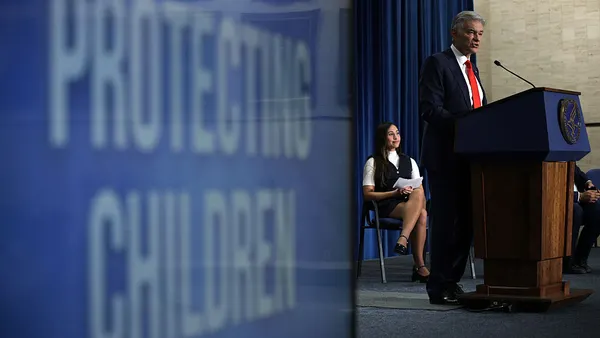Dive Brief:
- Attempting to prevent, prepare for and recover from violent acts, including assault, murder, suicide and shootings, cost hospitals $18.3 billion in 2023, according to a report by the American Hospital Association released Monday.
- Health systems shell out more than $3.6 billion annually on trainings, security and modifications in an effort to subvert violent incidents at their facilities, the AHA said. The sector spends more than four-times that — about $14.7 billion — on post-event costs of violence generally, the lion’s share of which went to covering healthcare costs for fatal and nonfatal injuries.
- In a statement accompanying the report, the AHA renewed calls for stronger workplace protections for healthcare workers in light of the findings and urged lawmakers to pass the Save Healthcare Workers Act, which would make it a federal crime to assault a hospital worker on the job.
Dive Insight:
Violent incidents have been steadily climbing over the past decade and became more pronounced during the COVID-19 pandemic, when healthcare workers increasingly became the targets of attacks.
Providers are also responding to a surge in community violence, and treat millions of victims annually in the emergency room. They bear indirect costs, including having to shoulder heightened security measures in an attempt to keep workers safe.
The new AHA report, which was performed in partnership with the University of Washington School of Medicine’s Harborview Injury and Prevention Research Center, finds the cumulative impacts is a multi-billion dollar financial burden.
The largest cost comes from caring for victims of attacks, according to the report. The AHA found hospitals paid more than $13 billion annually to treat victims of fatal and non-fatal attacks. The costs include caring for uninsured patients and what the lobbying group says is shortfall from public insurance program underpayments.
Hospitals also shell out money to keep their staff safe from possible violence, including investing in developing emergency management policies, upgrading security systems and developing violence intervention programs.
Indirect costs can also show up in the form of employee absenteeism or attrition related to violence, the report found. Together, these costs equate to an estimated $541.3 million annually.
The collective strain is weighing on the sector, warned the AHA. The lobbying organization called for lawmakers to back a piece of bipartisan legislation that would introduce tougher sanctions for attacks on healthcare workers — similar to penalties for attacks on employees working in the airline industry.
“With the increase in violent events within clinical settings across the country, the resources needed to protect hospital workers and care for victims has grown exponentially,” said AHA President and CEO Rick Pollack in a statement. “Every member of the health care team bears an enormous risk and burden of this violence. This report is yet another reminder we must do more to protect them.”













